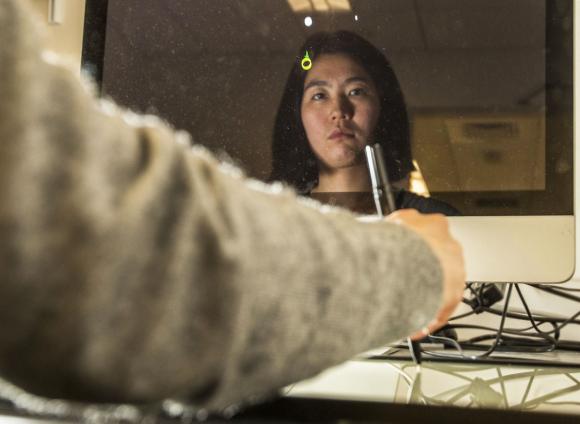PROVIDENCE, R.I. [Brown University] — Maybe distraction is not always the enemy of learning. It turns out in surprising Brown University psychology research that inconsistent distraction is the real problem. As long as our attention is as divided when we have to recall a motor skill as it was when we learned it, we’ll do just fine, according to the new study.
Most learned motor tasks — driving, playing sports or music, even walking again after injury — occur with other things going on. Given the messiness of our existence, said lead researcher Joo-Hyun Song, assistant professor of cognitive, linguistic, and psychological sciences, the brain may be able to integrate the division of attention during learning as a cue that allows for better recall when a similar cue is present.
“The underlying assumption people have is that divided attention is bad — if you divide your attention, your performance should get worse,” Song said. “But learning has a later, skill-retrieval part. People haven’t studied what’s the role of divided attention in memory recall later.”
Consistent distraction
Now Song and neuroscientist Patrick Bédard have. Their study, published in the journal Psychological Science, involved two main experiments.
In the first, 48 volunteers manipulated a stylus on a touchpad to virtually reach for targets on a computer screen. The trick to learn was that the computer would bend the virtual world by 45 degrees, so the subjects had to compensate. Meanwhile some volunteers also had to perform another task, which was to count symbols that moved by on the screen as they made their awkward reaches. Other volunteers saw the symbols but were told they could ignore them.
Later the subjects would demonstrate their new reaching skills, some with and some without again having to count symbols.
The subjects were therefore split into five groups based on whether they had to endure the symbol distraction either during learning or during recall and to what degree (high or low). For example, the “none-none” group never dealt with the symbols, the “high-none” group were distracted when learning but not during recall and the “high-high” group had their attention equally divided at both times.
When the researchers looked at how well the subjects in each group recalled the task, they found that the high-high group did as well as the none-none group, while the high-none, low-none and none-high groups all struggled. It was as if those who were denied the same degree of distraction during testing as they experienced during learning suffered a disadvantage.
A second surprise
A second experiment showed that the distraction at recall didn’t have to be the same kind as the distraction during learning. Song and Bédard put another 50 subjects through a similar set of experiments, but this time the distraction during recall for some volunteers was shapes, for others it was shapes of differing brightness, and for still others it was sounds.
In the end it didn’t seem to matter what the distraction was during recall as long as subjects had had a distraction during learning. Everybody who had been distracted in both learning and recall performed better than those who were distracted while learning but undistracted during recall.
Notably, the effect Song measured didn’t depend on keeping the external context, for instance the ambient surroundings, consistent. There just had to be the same degree of distraction at both times. In this regard, the study is not merely recapitulating the well-accepted observation that people can remember better when they are in the same context as before. If anything, she said, it suggests that divided attention is more powerful than external context in prompting the kind of recall measured.
Can learning improve?
Song is continuing to study the affects of attention on learning. In her lab she’s varying the timing of the distraction, for example.
Another task is to figure out what might be going on in the brain to allow divided attention to be a boost for recall, rather than a hindrance for learning.
“For now my working hypothesis is that this creates an internal representation in which divided attention is associated with the motor learning process, so it can work as an internal cue,” Song said.
Song said she is curious about whether understanding the effect could improve rehabilitation. It may be better, for instance, to help patients learn to walk not only in the clinic, but amid the degree of distraction they would encounter on their neighborhood sidewalk.
“Without consideration of attentional contexts in real-life situations, the success of learning and rehabilitation programs may be undermined,” she said.
The National Institute of General Medical Sciences funded the study (grant: NIH IDeA P20GM103645).

